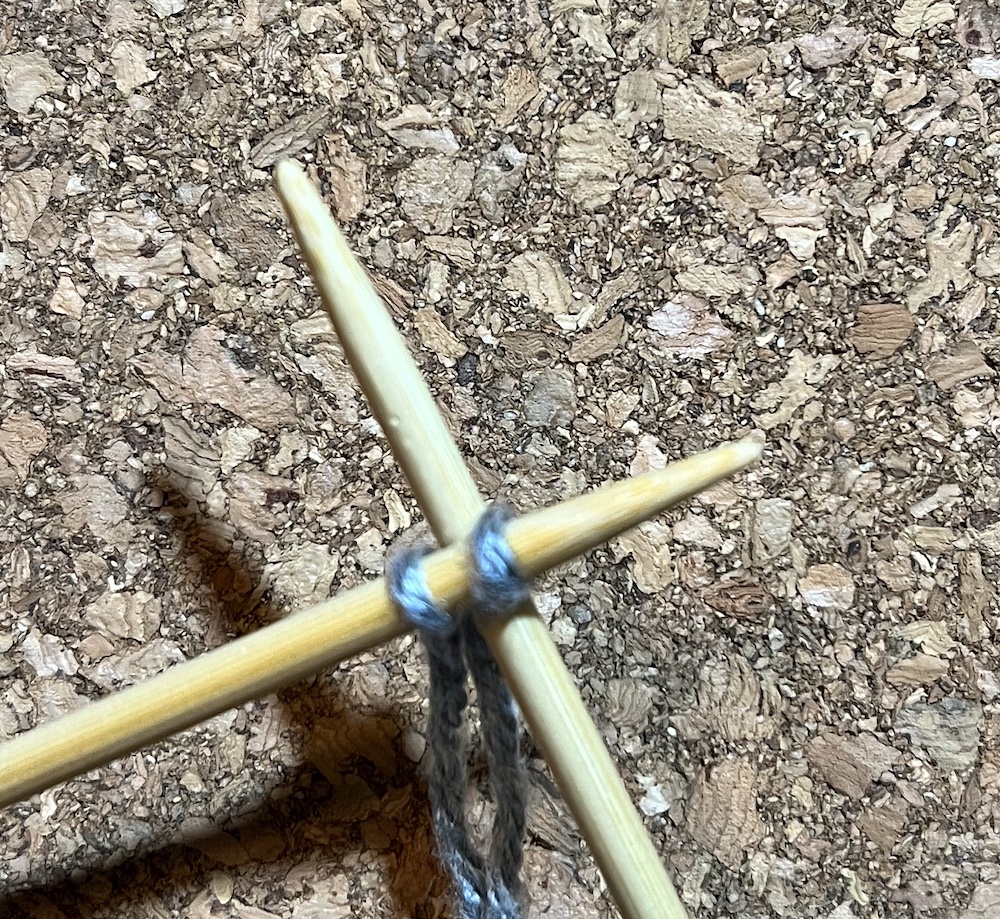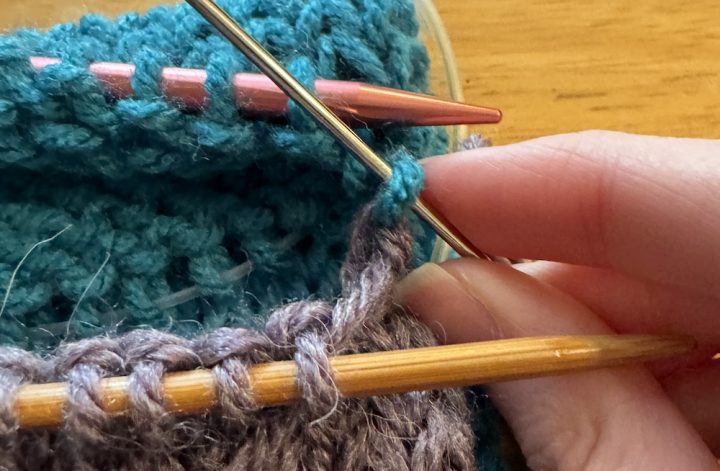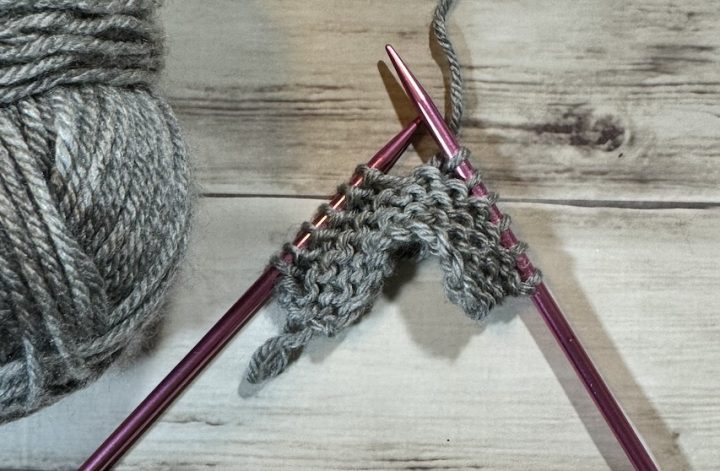Affiliate links may be included for your convenience. View our privacy and affiliates policy for details.
The cable cast on is an easy way to begin a knitting project. It’s similar to the knit cast on with one little difference. Some people prefer it to the knit cast on, but both are nice options for starting a knitting project.
What is the Cable Cast On?
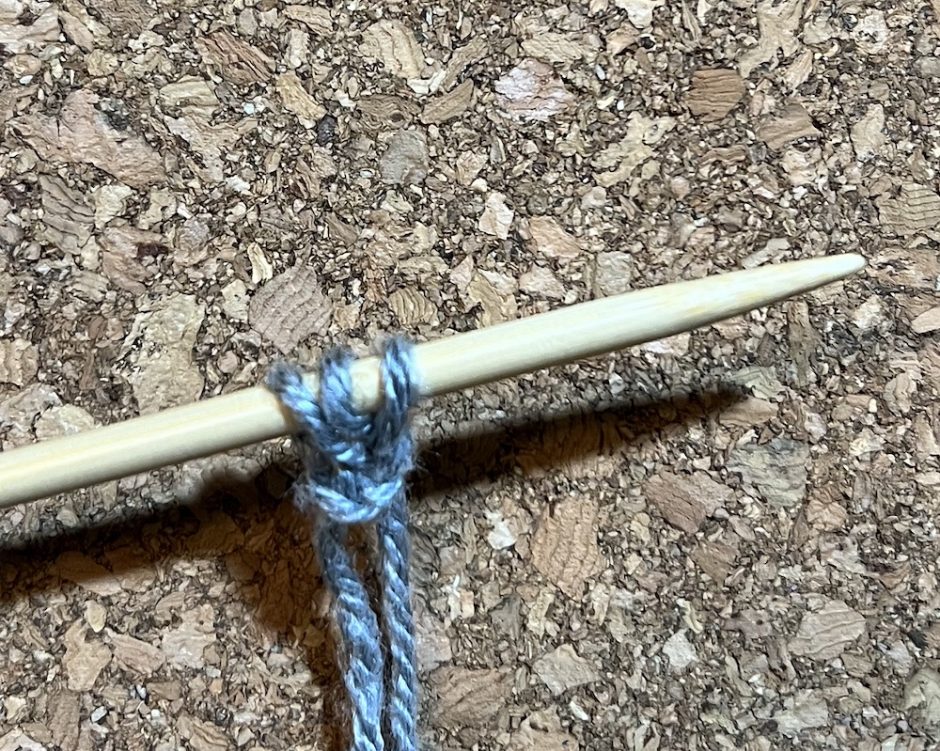
Cable cast on is made by casting on a stitch by working in the space between the two previous stitches. It is a firmer and less elastic cast on than the knit cast on.
It has a nice look and is different on both sides. It’s easy to make and maybe a little faster than the knit cast on, but it does help if you know how to a knit cast on before you try the cable cast on.
This cast on is the same whether you work with the yarn in the right hand or left hand; just form the stitches the same way as if you were knitting.
You can use this cast on to add stitches at the beginning of a row in addition to using it to start your project.
For this demonstration I’m using some of my favorite Clover needles and Lion Brand Basic Stitch, which is a great yarn to practice with.
How to Make the Cable Cast On

Because you need two stitches to work with, you can start with a slip knot and then make the first stitch as you would for the knit cast on (slide right hand needle into loop from back to front, wrap the yarn around the right hand needle, bring the right hand needle to the front through the loop, put the new loop onto the left hand needle).
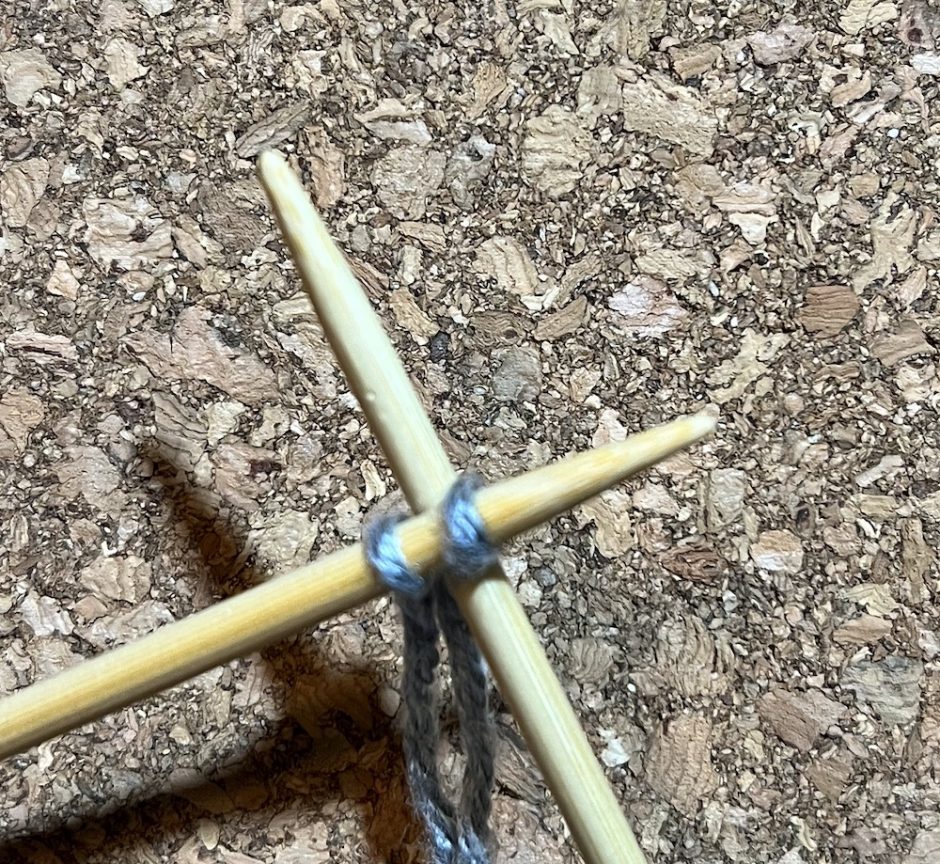
Now that you have two stitches, put the right hand needle between the two stitches, from front to back.
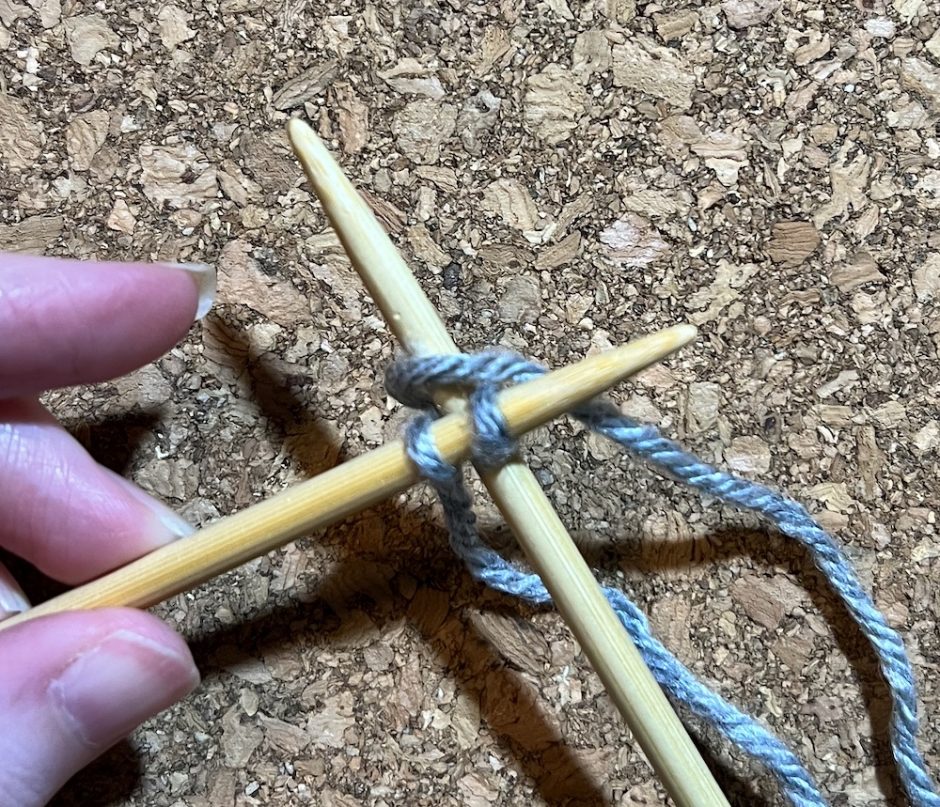
Wrap the yarn around the right hand needle as if you were making a knit stitch.
Bring the right handle needle back to the front, between the two stitches, with the new loop still on the right needle.
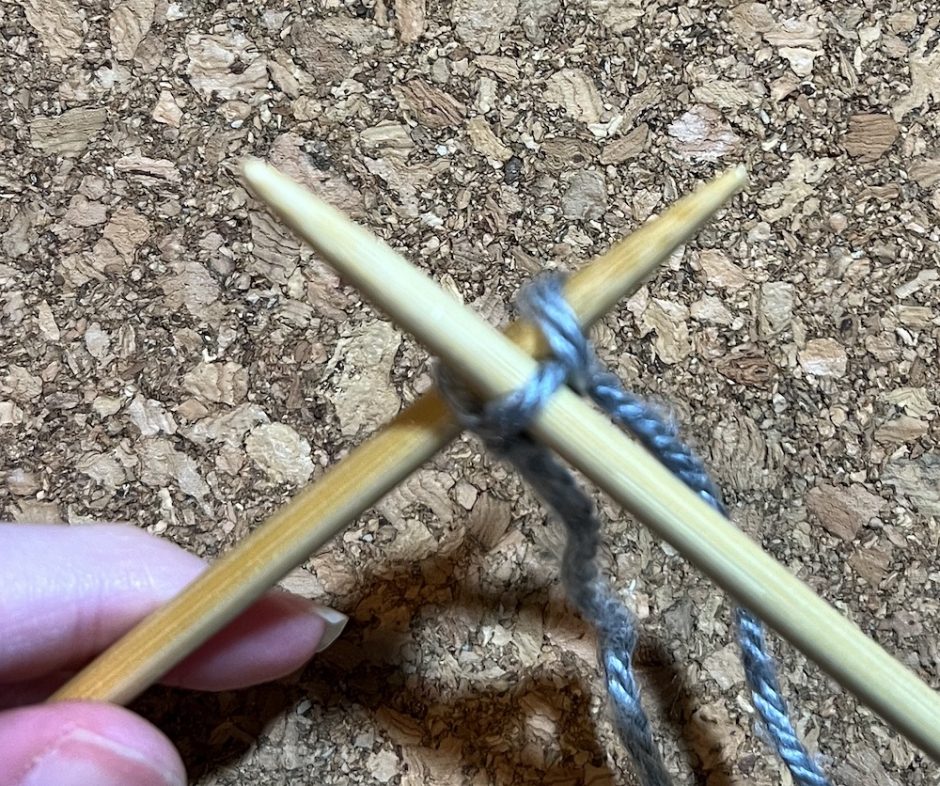
Make the loop big enough that you can place it onto the left hand needle, then pull gently on the working yarn to make it fit securely but not too tight or too loose on the left hand needle.
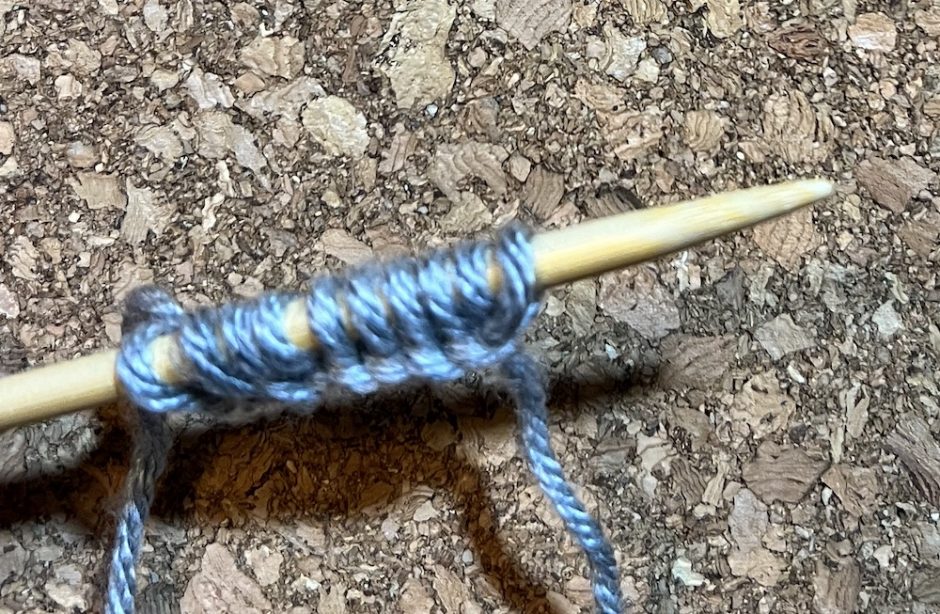
Repeat this process as many times as you need to in order to complete the cast on.
Working without a Slip Knot
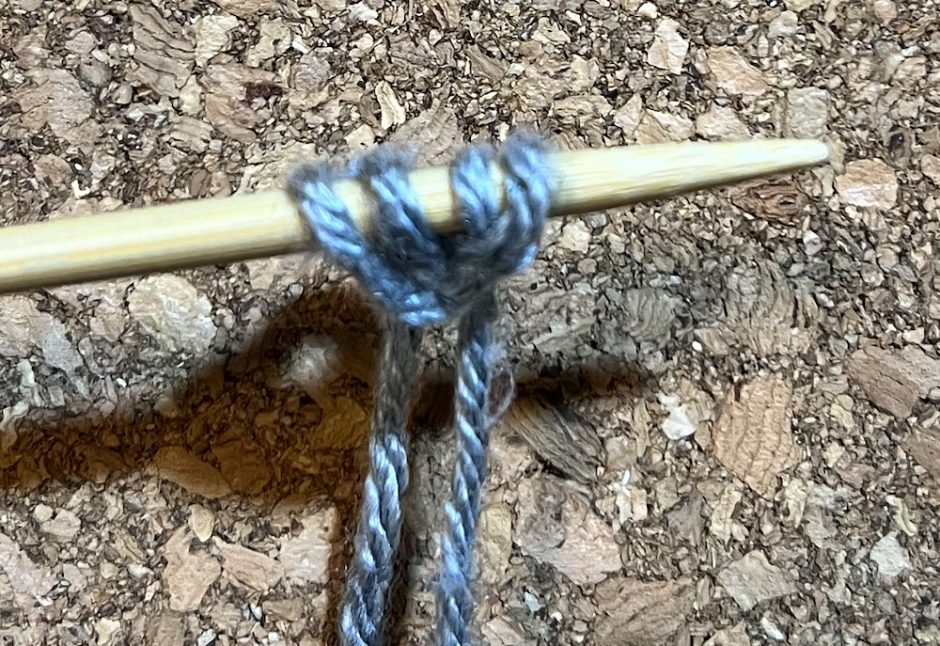
If you don’t like slip knots in your knitting projects you can start with a loop and work your one knit cast on stitch, then work the cable cast on as described above. You need the two stitches together for the loop to stay in place on the needle.
Knitting with the Cable Cast On
The cable cast on is easy to work with so you can just begin knitting as normal without turning the work. You can decide which side of the cast on you prefer and make that your right or “front” side.
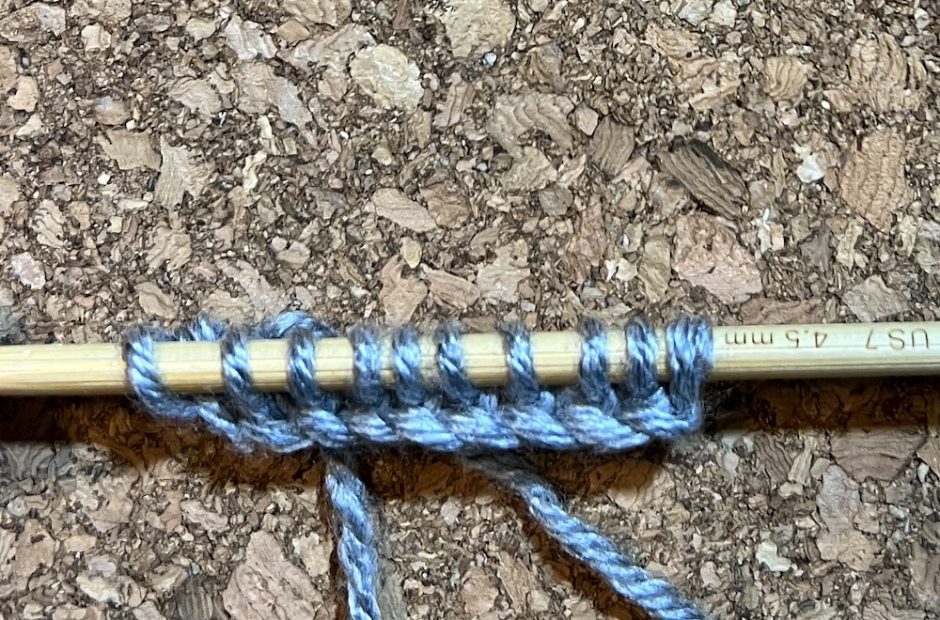
If you like the “back” of the cast on as it looks when you work it, make your first row a wrong-side row and begin the right side pattern after you’ve worked the first row of stitches.
Variation: Purl Cable Cast On
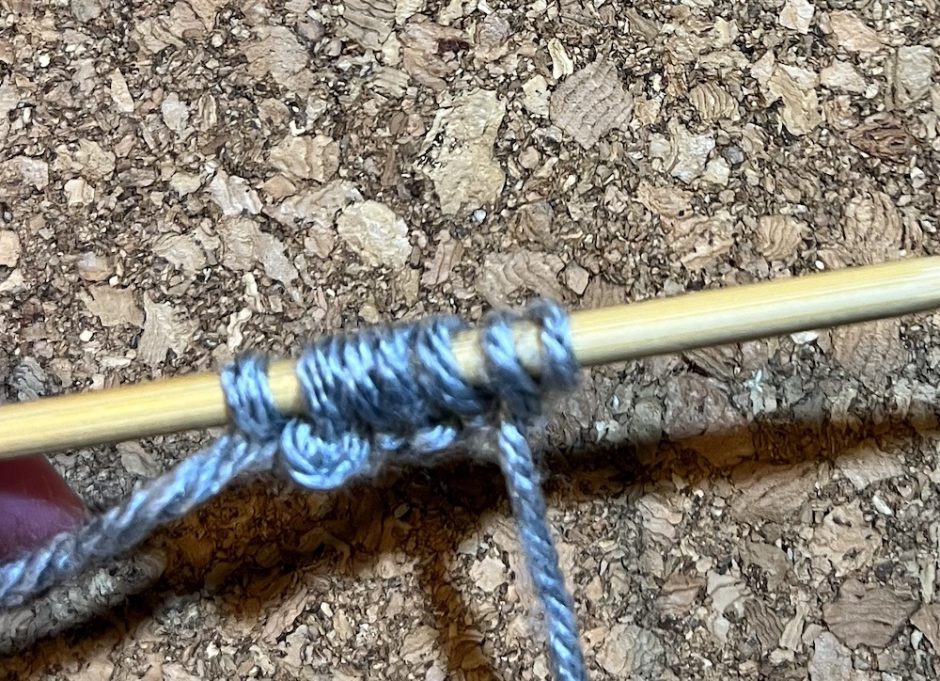
Because you can work the cable cast on with knit stitches, you can also do it with purl stitches. Instead of making the stitches as if to knit, make them as if to purl.
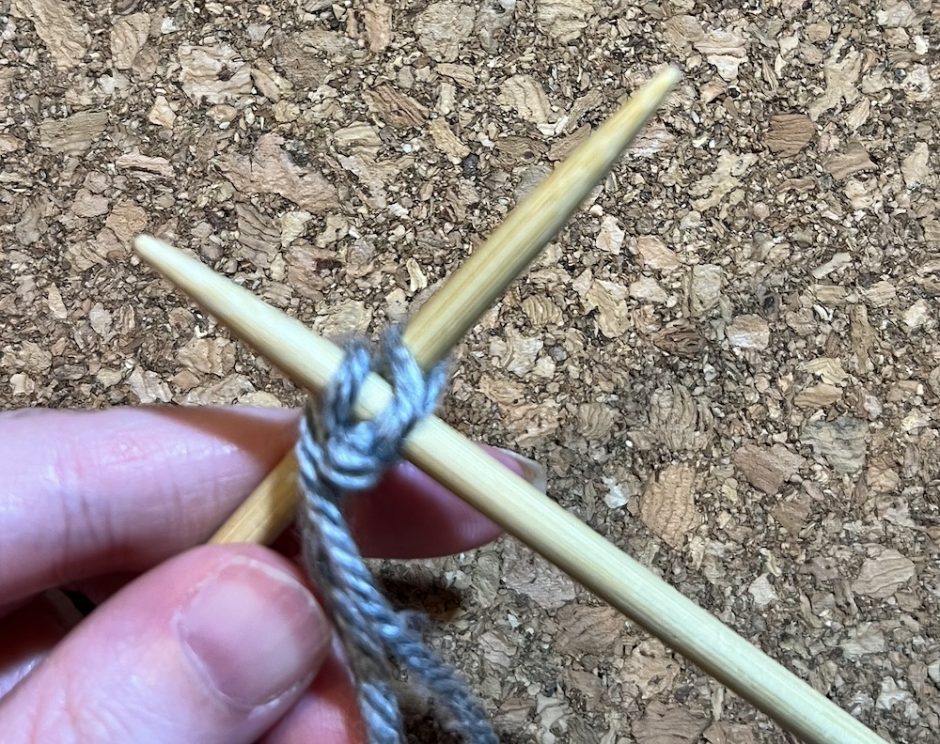
That is, with the yarn in front take the right hand needle between the two stitches from back to front. Wrap the yarn around the needle and take it back between the stitches with the loop still on the right hand needle. Pull it up and over onto the left hand needle and snug as needed.
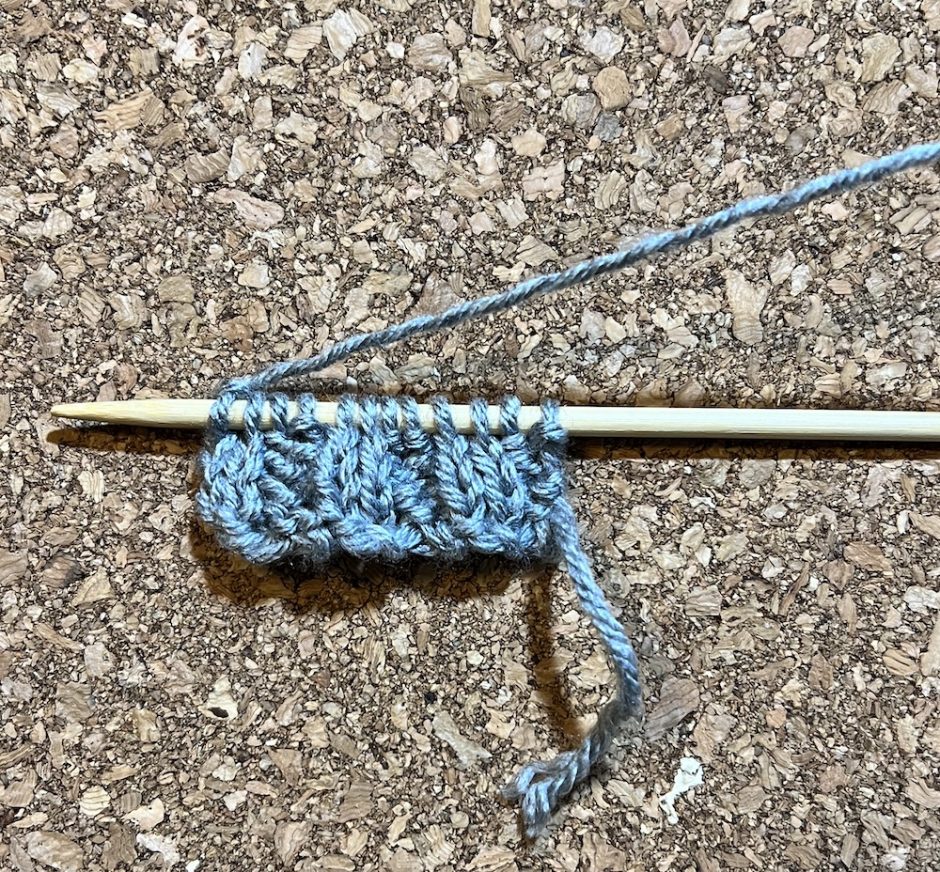
You can also alternate between knitting and purling in your cable cast on to make a great cast on edge for ribbing.
Cable cast on is a great cast on to know, even if you don’t use it very often. Try it and knit cast on both and decide which one you like better.
